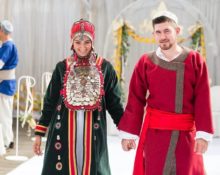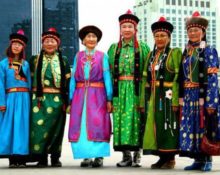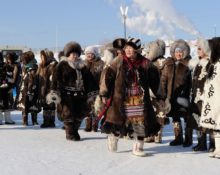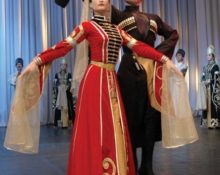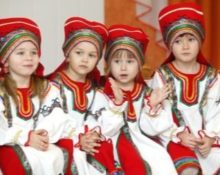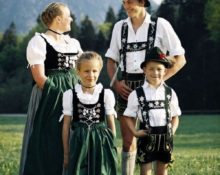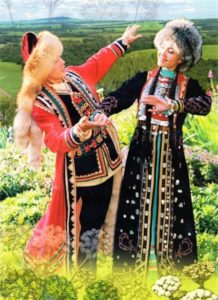 One Bashkir legend tells that after the creation of the world, different peoples settled in different places, and each nationality received its own language and costume...
One Bashkir legend tells that after the creation of the world, different peoples settled in different places, and each nationality received its own language and costume...
National clothes of representatives of different countries are a tribute to their ancestors. With the help of a costume, the old generation passes on the heritage of their people to their descendants and tells their story.
For the Bashkir people, the national costume is not only a way to show off at the holiday. Each item of clothing embodies the rich history of Bashkiria, reflects the way of life and character of the people living there.
Basic information about the national costume
Bashkiria is a cool region, so national clothes are distinguished by their multi-layered nature. Several robes were worn over the undershirt; depending on the time of year, they were thicker or thinner. The topmost final layer was “elyan” - a long caftan made of cloth.
Important! Festive attire had more clothing than everyday clothing.
The nobility of a person was indicated not only by the wealth of clothing and its decoration, but also by the number of outfits worn at a time. The more robes, the wealthier and more influential he is.
Variety of outfits
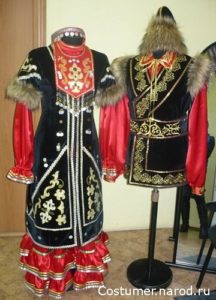
Depending on the territory occupied in the autonomy historically there are 7 variants of the national costume. Each of them has an element that is the “calling card” of the given area, by which others recognize it.
Bashkirs are divided into north- and south-western, north- and south-eastern, eastern, living in the central part and in Samara-Irgiz settlements.
Within one small country, one can observe what typos the way of life of its population imposes on national attire.
- In the northern regions The Bashkirs quickly appreciated the convenience of settled life and took up crop production. They spun fine yarn from flax and hemp fiber and wove fine cloth with intricate patterns.
- Bashkir southerners remained faithful to cattle breeding. Therefore, they produced cloth products, felted hats, and made scooter shoes.
Materials
The ancestors of modern Bashkirs valued luxury, bright colors and rich decorations on clothes. This contributed to the creation of a traditional outfit.
Wealthy citizens could afford items of clothing from expensive fabrics: velvet, silk, satin.
Those who are poorer, and the majority of them were sewing casual clothes made of cotton, linen, coarse hemp and even nettle linen. For the production of Upper Yelyans and Cossacks it was used felted sheep's wool cloth.
Bashkir wardrobe items were decorated with gold and silver embroidery, beads, coins, leather and fur elements.
Features of the cut
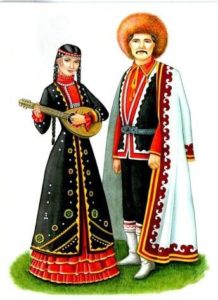
According to religious principles, women and girls were forbidden to expose parts of their bodies in front of strangers. This made its own adjustments to the creation of the national costume.
Women's outfits do not fit the figure; a loose, flowing cut predominates. Floor-length clothing with long sleeves.
For commoners, for men, for women, The main type of clothing was spacious, free-flowing, homespun shirts, trousers and robes..
For male hunters, shepherds, horsemen and farmers, loose clothing was important for comfort.
Interesting! The ornaments decorating the traditional clothes of the Bashkirs have a symbolic meaning.
The presence of plant elements or animal figures in it served as protection for people from unkind people, from damage, and attracted good luck to the owner.
Women's national costume
Women of any nationality are always beautiful. Each of them is a coquette at heart. She dreams of finding her lover and attracting the attention of the opposite sex. Even within the framework of strict religious canons, the outfit of girls from Bashkiria gradually improved and became more and more beautiful. This is confirmed by numerous photographs.
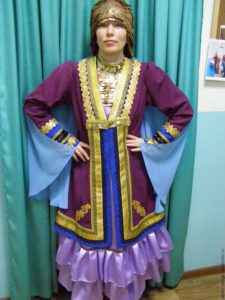
The dress is the basis of the outfit
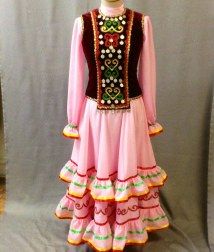
Kuldek is a traditional Bashkir dress, decorated with embroidery. At first it had a small collar, a wide neckline, and was tied with a belt under the chest (for commoners, with twine).
In the last century it was slightly modified and improved. Pintucks appeared in the chest area, and a turn-up appeared on the sleeves and collar.
Worn on a dress bib, supposedly protecting against evil spirits.
Women of a wealthy family wore camisoles, richly decorated with silver coins.
Other costume elements
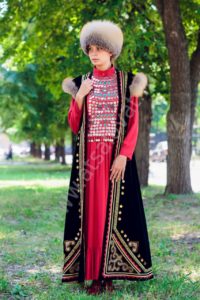
Bashkirs had a wide choice of outerwear.In different situations they wore chekmen, elany, kazeks, beshmets, fur coats and sheepskin coats.
Under the dress it was necessary to wear spacious pants - ishtan.
Even such an ordinary thing in the modern world as an apron is used by Bashkirs not only for its intended purpose - preparing dinner or running the kitchen.
Interesting! An apron (aljapkys) is an obligatory part of a festive outfit. For special occasions, it is sewn from expensive and beautiful fabrics.
The legs of Bashkir women were warmed by woolen, felt or canvas stockings. Shoes on top leather shoes, decorated with embroidery or multi-colored tassels.
Headdresses for celebrations were not inferior to kultek in elegance. In ordinary life, women covered their heads with scarves or shawls. On the street, a fur hat - burek - was worn over the scarf.
Men's national costume
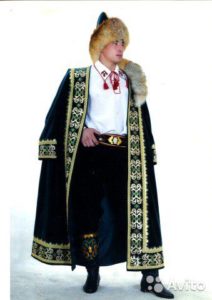
The costume of the stronger sex does not amaze with the variety of outfit options. Men are less capricious in choosing outfits. Men's clothing is not inferior to women's clothing in the splendor of finishing and thoughtfulness of elements.
For every day, the Bashkir husband preferred a loose-fitting shirt, pants and a long robe or camisole (depending on status). Cloth clothes were popular among the male population. chekmeni.
Warmer variants of outerwear were kezeks - kaftans with a flared cut and a high collar.
In men's clothing of the Bashkir peopleThe predominant color is bright green, symbolizing courage and nobility.
Interesting! Residents of the south and north of the Bashkir autonomy can be recognized by the shape of their shirt neckline.
Among the southerners, it was made oblique, without a stitched collar, its edges were fastened with lacing.And residents of the northern regions wore a model that was more familiar to modern people: it had a collar and a smooth edge.
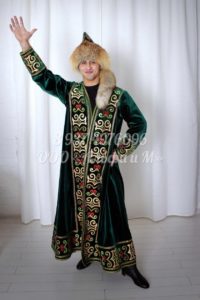
When cold weather set in, the Bashkirs insulated themselves by wearing sheepskin coats and fur coats.
In areas where cattle breeding flourished, the entire population, young and old, wore leather boots and shoes. In winter, felted shoes were used.
Men's heads were covered with skullcaps. Just like women, they wore national fur hats-bureks.
Features of children's national costume
Baby clothes practically no different from an adult.
The girls' dressy and casual clothes mirrored their mothers' outfits. Little kids weren't supposed to wear one. This is the headdress of an adult lady, which was a special cap with a veil. That's where the differences ended.
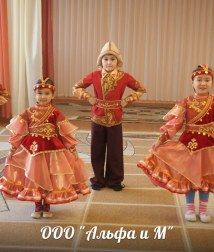
For boys, clothing was completely copied from men's. Like their parents, they wore laced shirts, pants, and a richly decorated belt in the traditional style of the area.
Wedding national costume
A wedding is a significant event in the life of a newlywed. For the Bashkirs it had a special solemnity. No less attention was paid to the preparation of the newlyweds’ wedding dresses than to the entire celebration.
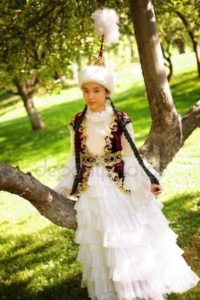
The clothes of the bride and groom were supposed to amaze and dazzle those present at the wedding. For this, parents were ready to pay fabulous remuneration to local embroiderers.
The wedding dress was decorated with ribbons and rich frills.
The color of the traditional outfit of the young people mattered; it was sewn in two colors:
- red - a symbol of home and a warm family hearth;
- white - personifying the sun and harmony in family affairs.
The chosen one's head was covered with an airy scarf.And the shoes were white boots; they were made from the finest and softest goatskin.
The bride sewed and embroidered the red wedding shirt for her future husband with her own hands and handed it to her betrothed just before the important day.
Bashkir costumes were created to last for centuries. Modern youth carefully preserves these folk traditions.


 0
0